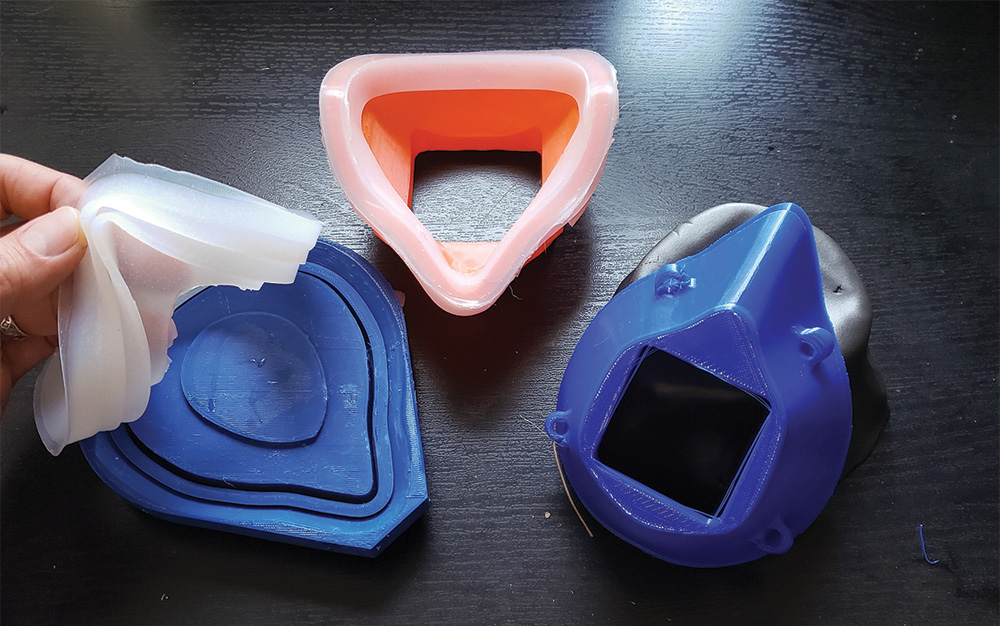



Every year, Bucknell engineering students and professors put their skills to work for the greater good, whether they’re partnering with local businesses on projects that support jobs or creating eyeglasses for impoverished children in the Global South. This spring, their efforts took on greater importance than ever, as the college joined the nationwide effort to protect caregivers on the front line of the COVID-19 pandemic.
Professor Brandon Vogel, chemical engineering, devised an intubation tent that safeguards doctors when they place patients on ventilators and donated the devices to Evangelical Community Hospital in Lewisburg. Professor Eric Kennedy, biomedical engineering, and his student Rachel Michael ’20 worked on a reusable plastic facemask with space to mount a disposable N95 filter cartridge. And many others, including mechanical engineering professor Nate Siegel and student workers at Bucknell’s makerspaces, created face shields for doctors and nurses, fabricating parts with 3D printers both on campus and in their own homes. Mechanical engineering major Xander Karpowicz ’22 even sought out 3D printers from a local high school to create shields for a hospital near his home in Lehighton, Pa.
All told, some 25 students, faculty and staff joined in the effort, and engineering alumnus Chuck Boldt ’72 offered financial support for the project. According to Siegel, their work was especially important for smaller local and regional health systems that don’t have the supply chains or purchasing power of larger systems.
“They need designs that people can make locally,” he says.
For Michael, who took part remotely from her home in Alexandria, Va., working on such an urgently needed project reinforced her choice of major.
“I feel like I have a responsibility to help doctors,” she says. “This is why we chose to be engineers: to solve problems. I chose biomedical engineering so that I could help doctors and come up with innovative solutions to medical problems. We have a duty to help out, and I feel like this is exactly where I can help.”